Kokopelli – Popular Trickster God Of The American Southwest Brought Happiness To People
Ellen Lloyd - AncientPages.com - There is something special and fascinating about Kokopelli, the Native American trickster god. Known under various names among several Native American tribes and sometimes nicknamed "Casanova of the Cliff Dwellers," his popularity seems timeless.
Playing on his magical flute, we encounter many petroglyphs and rock carvings of Kokopelli throughout the American Southwest.
Some of these rock carvings paintings are estimated to be 3,000 years old, and this clearly shows people kept the memory of Kokopelli alive, generation after generation.
Left: Kokoppeli in modern art. Credit Public Domain - Middle: Kokopelli petroglyph located on land near Embudo, New Mexico. Credit: Public Domain. Right: Kokopelli in front of a Camp Verde, Arizona coffee shop. Credit: Public Domain
There are many stories about Kokopelli, who was not only a trickster god. Kokopelli is also remembered as a fertility god, healer, and wonderful storyteller. His humpback was a bundle where he carried sacred objects, seeds, and songs.
Kokopelli was a source of happiness and joy. Kokopelli would visit villages, playing his flute, and people would sing and dance all night.
Kokopelli's Flute Playing - A Symbol Of The Transition Of Winter To Spring
Perhaps the most perplexing part of Kokopelli's visit is what happened afterward. As soon as Kokopelli left the village in the morning, the crops grew, and many women suddenly became pregnant. So, it's no wonder he was nicknamed "Casanova of the Cliff Dwellers."
His flute was of great importance to Native Americans. When he played on his flute, the snow melted, grass grew, and birds began to sing. In many myths and legends, it is therefore said that this fascinating fertility god was responsible for the end of winter and the coming of spring.
Kokopelli Was And Still Is Worshipped By Many Native American Tribes
Kokopelli was significant to the ancient Anasazi, also known as the Ancient Ones. The Anasazi occupied the valleys and plains in North America's "Four Corners" region (where Utah, Colorado, Arizona, and New Mexico meet at the corners).
Petroglyph of Kokopelli in the "Rio Grande Style" of the ancestral Pueblo culture after the year 1300 AD; taken at Mortendad Cave near Los Alamos, NM. Credit: Larry Lamsa - Flickr - CC BY 2.0
The Hopi were also familiar with Kokopelli, mentioned in their emergence and migration account. According to the Hopi legend, when their people emerged into the Fourth World (our current world), they encountered an eagle that shot an arrow into insects that carried the power of heat. These insects, known as máhus were not seriously harmed because their bodies healed as soon as they started to play on their flute. The two máhus accompanied the Hopi on their migration.
One of these insects was called Kókopilau (kóko meaning "wood" and pilau meaning "hump") because he looked like wood. He played on his flute and carried a bag of seeds that he had scarred across the lands. The astounding music of his flute made the roots grow.
The Hopi myth can also explain why many depictions of Kokopelli make him very insect-like in appearance.
Kokopelli – A Popular Native American God Who Made People Happy
The origin of Kokopelli's name is not entirely clear, but it may have been derived from the Zuni name for god ("Koko") and the Indian name for the Desert Robber Fly ("pelli"). Some scholars trace the origin of Kokopelli to ancient Aztec traders known as pochtecas, who were professional, long-distance traveling merchants in the Aztec Empire. They used to carry their goods in sacks slung across their backs, and this sack may have evolved into Kokopelli's familiar hump.
Kokopelli and Kokopelli Mana as depicted by the Hopi - Credit: Jesse Walter Fewkes, Hopi katcinas drawn by native artists, 1903. Public Domain
Kokopelli also had a female counterpart known as "Kokopelli Mana." Kokopelli was a charismatic, playful, intelligent god who, according to some tribes, was also a spiritual priest with actual healing powers. To the Zuni Indians, he was a rain priest, and the Navajo believed he was the god of the harvest. He was also regarded as representing the spirit of music.
Legends about Kokopelli vary, and he was assigned many different roles and responsibilities. y ed. Kokopelli seemed to bring out the "good" in everyone, which could be one of the reasons this Native American god has captured the imagination and hearts of so many people. We know with certainty that Kokopelli is still worshipped among many Native American tribes, and his popularity has never ended.
Today, one can encounter images of Kokopelli not only on ancient rock carvings but also on T-shirts, ball caps, and key chains.
See also: Lyman Lake Petroglyphs And Famous Kokopelli-Flute Player Left By Ancestors Of The Hopi Indians
Due to his popularity, Kokopelli has been adopted as a broader symbol of the Southwestern United States.
Updated on March 28, 2024
Written by - Ellen Lloyd – AncientPages.com
Copyright © AncientPages.com. All rights reserved. This material may not be published, broadcast, rewritten or redistributed in whole or part without the express written permission of AncientPages.com
Expand for references
More From Ancient Pages
-
 Pre-Clovis, Paisley Caves: Archaeologists Identified The Earliest Population Of North America
Archaeology | Jul 16, 2020
Pre-Clovis, Paisley Caves: Archaeologists Identified The Earliest Population Of North America
Archaeology | Jul 16, 2020 -
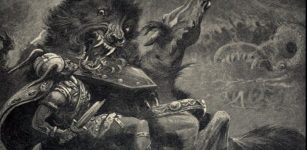 Frightening Fenrir That Killed God Odin And Delivered Chaos And Destruction In Ragnarok’s Final Battle
Featured Stories | Jun 6, 2016
Frightening Fenrir That Killed God Odin And Delivered Chaos And Destruction In Ragnarok’s Final Battle
Featured Stories | Jun 6, 2016 -
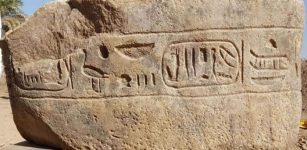 Royal Colossi Fragments, Mud Brick Wall And Pottery Uncovered In Matariya, Egypt
Archaeology | Dec 4, 2019
Royal Colossi Fragments, Mud Brick Wall And Pottery Uncovered In Matariya, Egypt
Archaeology | Dec 4, 2019 -
 Engraved Trees Are Living Records Capturing The Rich History And Traditions Of The Sámi People
Archaeology | Nov 21, 2024
Engraved Trees Are Living Records Capturing The Rich History And Traditions Of The Sámi People
Archaeology | Nov 21, 2024 -
 Ancient Tradition And True Meaning Of Candy Canes
Christmas Traditions | Dec 26, 2024
Ancient Tradition And True Meaning Of Candy Canes
Christmas Traditions | Dec 26, 2024 -
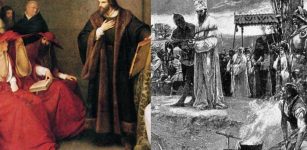 Jan Hus: Czech Reformer And Bohemian Religious Leader Was Burned At Stake For Heresy
Featured Stories | Dec 17, 2019
Jan Hus: Czech Reformer And Bohemian Religious Leader Was Burned At Stake For Heresy
Featured Stories | Dec 17, 2019 -
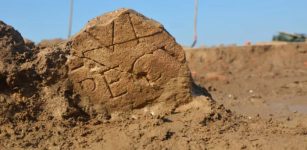 Surprising Discovery Of Almost Intact Roman Sanctuary With Temples In The Netherlands
Archaeology | Dec 23, 2022
Surprising Discovery Of Almost Intact Roman Sanctuary With Temples In The Netherlands
Archaeology | Dec 23, 2022 -
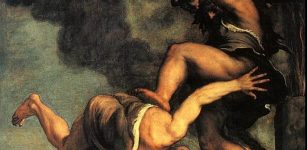 Supernatural Beliefs Have Featured In Every Society Throughout History: New Research Helps Explain Why
Featured Stories | Apr 5, 2023
Supernatural Beliefs Have Featured In Every Society Throughout History: New Research Helps Explain Why
Featured Stories | Apr 5, 2023 -
 Nicholas Roerich’s Search For Shambhala And Wish To Fulfill The Mysterious Buddhist Prophecy
Featured Stories | Nov 4, 2016
Nicholas Roerich’s Search For Shambhala And Wish To Fulfill The Mysterious Buddhist Prophecy
Featured Stories | Nov 4, 2016 -
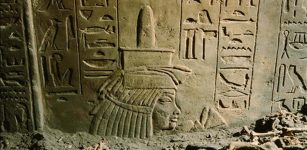 Tomb Of Maia, Tutankhamun’s Wet Nurse In Egypt’s Saqqara Opens To Public
Archaeology | Dec 22, 2015
Tomb Of Maia, Tutankhamun’s Wet Nurse In Egypt’s Saqqara Opens To Public
Archaeology | Dec 22, 2015 -
 On This Day In History: The Battle Of Actium Took Place On Sep 2, 31 BC
News | Sep 2, 2016
On This Day In History: The Battle Of Actium Took Place On Sep 2, 31 BC
News | Sep 2, 2016 -
 Was Aztec And Mixtec Turquoise Mined In the American Southwest?
Archaeology | Jun 15, 2018
Was Aztec And Mixtec Turquoise Mined In the American Southwest?
Archaeology | Jun 15, 2018 -
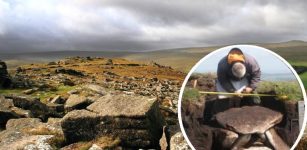 Mysterious Bronze Age Burial Chamber Discovered In Devon, UK
Archaeology | May 16, 2024
Mysterious Bronze Age Burial Chamber Discovered In Devon, UK
Archaeology | May 16, 2024 -
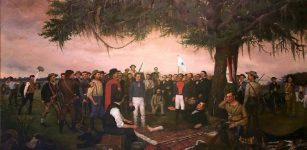 Texas Revolution – A Courageous Fight For Independence
Featured Stories | May 30, 2019
Texas Revolution – A Courageous Fight For Independence
Featured Stories | May 30, 2019 -
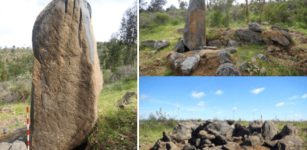 Mysterious Huge Megalithic Complex Of 500 Stones Discovered In Spain Could Be One Of The Largest In Europe
Archaeology | Aug 19, 2022
Mysterious Huge Megalithic Complex Of 500 Stones Discovered In Spain Could Be One Of The Largest In Europe
Archaeology | Aug 19, 2022 -
 Unknown Holographic Technology Hidden In Old Monastery Reveals A Surprising Secret
Featured Stories | Dec 7, 2018
Unknown Holographic Technology Hidden In Old Monastery Reveals A Surprising Secret
Featured Stories | Dec 7, 2018 -
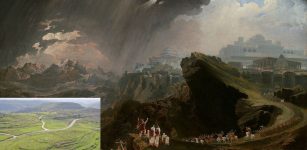 Archaeologists Search For The Tomb Of Biblical Joshua At Khirbet Tibnah
Archaeology | Aug 5, 2022
Archaeologists Search For The Tomb Of Biblical Joshua At Khirbet Tibnah
Archaeology | Aug 5, 2022 -
 On This Day In History: Unbelievable Flight Took Place – On Apr 28, 1939
News | Apr 28, 2016
On This Day In History: Unbelievable Flight Took Place – On Apr 28, 1939
News | Apr 28, 2016 -
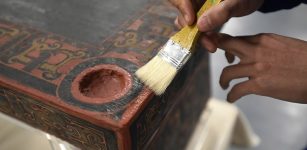 2,500-Year-Old ‘Dragon Bed’ Restored By Chinese Archaeologists
Archaeology | Jan 21, 2018
2,500-Year-Old ‘Dragon Bed’ Restored By Chinese Archaeologists
Archaeology | Jan 21, 2018 -
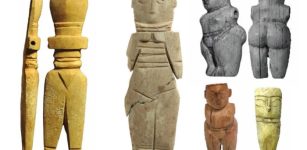 Ancient Wooden ‘Coptic Dolls’ May Have Been The Ancestors Of Today’s Barbie Dolls
Archaeology | Sep 23, 2023
Ancient Wooden ‘Coptic Dolls’ May Have Been The Ancestors Of Today’s Barbie Dolls
Archaeology | Sep 23, 2023



